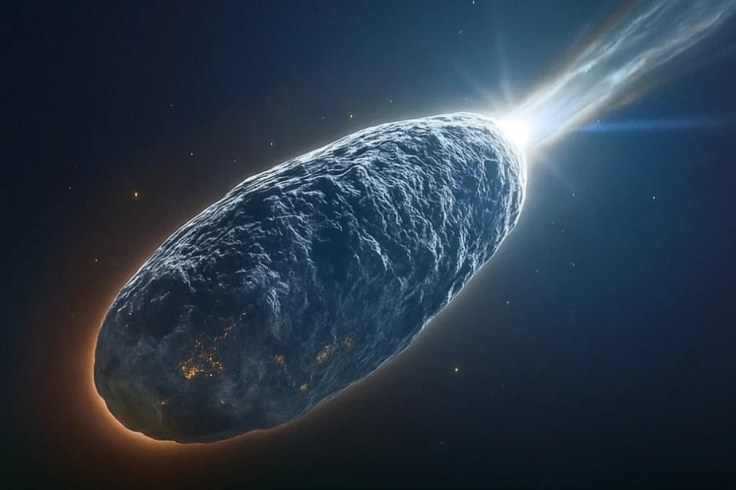3I/ATLAS 'Hid' From Earth With 0.005% Chance Path, Avi Loeb Reveals
Is interstellar object 3I/ATLAS an alien probe? Avi Loeb cites its 0.005% chance path. The JWST seeks answers in December.

A visitor from deep space is racing through our solar system, and it is behaving so strangely that it's challenging everything we know about comets. This object, the third known interstellar visitor, is named 3I/ATLAS.
As it passed its closest point to the Sun (perihelion) on October 29, 2025, new data revealed shocking behaviour. It suddenly became five times brighter and, most perplexingly, it is showing non-gravitational acceleration. It's being pushed.
Famed Harvard astrophysicist Avi Loeb has warned that 'something strange' is happening. At a distance of 206 million kilometres from the Sun, something other than gravity is propelling 3I/ATLAS. Scientists found two kinds of motion: one directly away from the Sun and another, sideways, with no vertical movement.
If 3I/ATLAS were a typical comet, this push would come from massive gas jets. But there is a twist. Based on the force, Loeb calculates the object would have to have lost about 13% of its total mass. Such a massive loss would produce a spectacular, enormous gas cloud. That cloud is nowhere to be seen.

A Trail of Clues: Avi Loeb and 3I/ATLAS's Strangest Facts
The lack of a gas cloud is just one of many baffling anomalies. Loeb suggests an alternative: a 'rocket-like' mechanism ejecting material at much higher speed. This object is also bluer than the Sun and brightened faster than any comet ever recorded. The list of peculiarities continues.
Its composition is baffling, with gas rich in nickel, similar to industrial metal alloys, but with very little iron or water. Comets are typically mostly ice, but 3I/ATLAS appears to have only 4% water.
Then there is its trajectory, which Loeb notes had only a 0.005% chance of occurring randomly. The path was precisely timed to pass close to Mars, Venus, and Jupiter, all while remaining hidden from Earth-based telescopes.
This was because the object reached this point at a time when it was on the opposite side of the Sun from Earth, making it impossible to observe from the ground. Loeb theorises this could be a 'deliberate 'blind spot.''
This path resembles a 'gravitational assist' manoeuvre used by spacecraft. Adding to the mystery, its arrival direction aligns within 9 degrees of the famous 1977 'Wow!' signal, a coincidence with a mere 0.6% probability.

An Artificial Probe? Avi Loeb and 3I/ATLAS's Big Hypothesis
These compounding anomalies have led Avi Loeb to suggest a startling hypothesis: 3I/ATLAS 'may be an artificial alien probe'. While mainstream astronomers remain cautious, classifying the object as a natural (though unusual) comet, Loeb argues that the multiple strange behaviours 'warrant serious investigation' into an artificial origin.
The object's acceleration, which mimics losing a sixth of its mass without any visible cloud, remains the central puzzle. It also turned a bright blue near the Sun. This could be burning gases, but Loeb also posits it could be the heat from an 'unknown artificial source.'
The December Verdict for Avi Loeb and 3I/ATLAS
The truth may be revealed soon. In December, the James Webb Space Telescope will check the object. If it sees a huge gas cloud, then 3I/ATLAS is just an extraordinary comet. But if no gas cloud appears, 'the mystery deepens.'
The next few months will decide if this is a bizarre natural phenomenon or, as Loeb suggests, 'a messenger from deep space that challenges everything we know about the universe.'
The universe has sent us a puzzle. Is 3I/ATLAS a one-in-a-billion natural marvel, or is it the first sign that we are not alone? The data from the James Webb Space Telescope this December could change our place in the cosmos forever. The truth is out there, and we are on the verge of finding it.
© Copyright IBTimes 2025. All rights reserved.





















